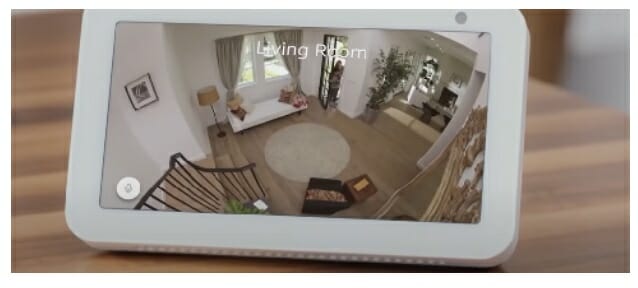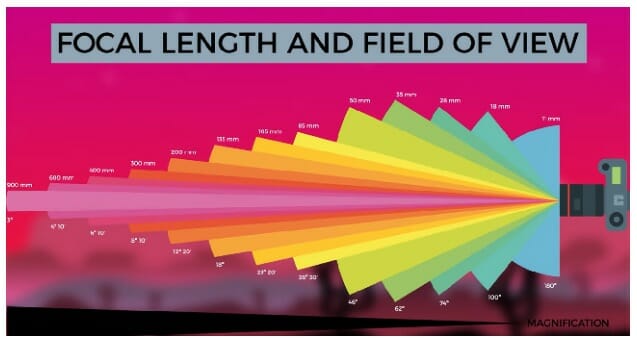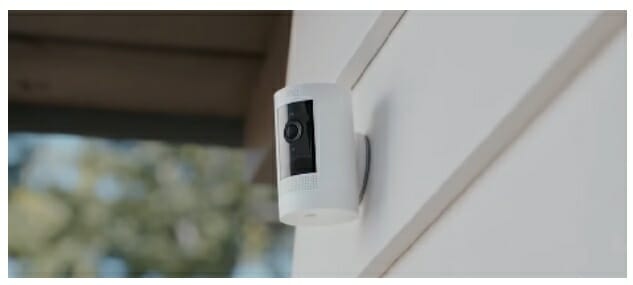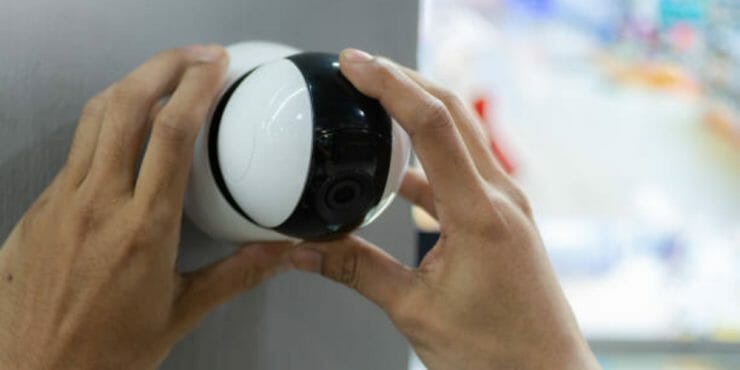Wireless security cameras are becoming more innovative every day. One of the best recent features includes their ability to transmit signals over large areas without using standard cable wires.
In general, a security wireless camera can transmit around these ranges:
- 250 to 500 feet in closed locations
- 30 feet for built-in antenna receivers
- 1,000 feet for external antenna receivers
However, this may change due to different factors. As we go through the rest of this guide, I will cover the factors affecting the range of your security camera. Also, I will explain to you how far can a wireless security camera transmit.
Transmission of a Video Signal: How Far Can a Wireless Camera Go?

If you are still wondering how a wireless camera can transmit a video signal, a wireless camera’s maximum range differs by brand. It can be as few as 30 feet for built-in antenna receivers and as far as 1,000 feet for external antenna receivers.
The range is further influenced by signal-blocking or reflecting obstructions such as walls; other wireless gadgets in the neighborhood; and any barriers that the signal must travel through. (1)
In addition to that, the range varies based on your transmission type. The maximum distance a wireless security camera can transmit may also be dependent on your antenna.
Wireless security cameras of the first generation were ineffective because they used analog signals that could only travel small distances and provided low-resolution images. Digital cameras became popular in the mid-1990s, transmitting higher-resolution images via digital signals. However, the range for analog and digital transmission is different.
Analog wireless security cameras have a lesser range than digital cameras due to the lower frequencies and the elevated chance of signal interference. These security cameras use a 900MHz frequency and transmit images up to a mile away.
Digital wireless security cameras have a longer range because they use the 2.4GHz or 5GHz frequency range to avoid signal interference.
Factors Affecting the Range Distance of a Wireless Security Camera
How far can a wireless camera transmit depends so much on these factors? Thus, before considering where to mount your security wireless camera, take note of these:
#1. The Focal Length

The focal length of a security wireless camera lens relates to the size of the lens, and it dictates how far a wireless camera transmits and detects. The terms field of view and range are sometimes misinterpreted. Range refers to how far a camera can see, whereas the field of view refers to how much, or how broad, it can see.
A wider field of vision is achieved with a shorter focal length, but things look smaller and further away from the camera. As a result, you’ll be able to catch more, but it’ll be less detailed and blurry. Its field of view will be smaller with a longer focal length, but things will appear larger and closer to the camera.
#2. Distance & Location
The location of your long-range wifi cameras impacts how far a wireless camera will transmit. The more distant your camera is from the subject, the more difficult it will be to capture details. It would help if you double-check and see that nothing obstructs the camera’s line of sight. The camera won’t see anything if there’s an obstruction.
Aside from that, blockages reduce the signal strength of a wireless camera, lowering image quality.
#3. Quality of Its Camera
Even though the specs of one camera may be identical to those of another, this does not imply that they are of equal quality or function in the same manner.
If you want to buy long-range wifi cameras that will provide you with the best results, you should buy from recognized and trustworthy sellers. They will not only offer you high-quality materials, but they will also be there to help you with your CCTV installation at every step.
#4. The Resolution
You can see more objects with a wider field of vision, but image quality gets in the way. As a result, resolution plays a role in determining the range of your security camera.
The number of pixels in your image is referred to as resolution. The higher the pixels in an image, the higher the resolution. The more pixels you have, the clearer and more detailed your pictures. Images taken with a low-resolution camera will seem fuzzy or pixelated.
With the affordable cost of high-definition security cameras, you can now use 4MP or 5MP, and even 4K surveillance cameras systems for a detailed video. You will see more details even when the object is far away if you have a better resolution.
Wireless Security Cameras: The Advantages

Crime is continually on the rise, and you must make sure that your surveillance system is capable of preventing or capturing criminals in the act. There are several advantages to using wireless CCTV cameras over their wired versions. These are:
Wire Pitfalls and Physical Risks
A burglar can simply bring a pair of wire cutters to get into a property with wired CCTV monitoring, regardless of how complex the system is. At this moment, they can enter the building without being observed in any way. Because wireless CCTV cameras do not have cables, they are not vulnerable to this type of break-in.
In addition, you will most likely need to drill holes and purchase mounting kits when you install a wired CCTV camera. Wireless CCTV cameras take less time to set up and are exceedingly simple to use. The cameras may be angled in any direction to conform to the precise locations required for appropriate CCTV security.
Offers More Flexibility
Wireless security cameras may be positioned anywhere you need them due to the lack of cables. The wiring on an ordinary security camera may limit the viable locations, leaving areas of your facility unmonitored. You will not be dealing with dangling cables, so going wireless makes it easier to conceal the cameras.
Easy Setup

Long-range wireless cameras can be installed up to 10 miles away from the receiver yet still pick up the signal. The signal may also flow through metal, wood, glass, and plastic barriers. You may monitor the feeds and access your Wi-Fi camera from anywhere. This means you may go on vacation or work from home without having to worry about your property’s security.
Protected Footage
Data from long-range wireless cameras are saved straight to the cloud in most situations. They’re frequently integrated with alarm monitoring services as well. A determined burglar might simply get access to your property and destroy the recordings. It’s impossible to create a case against them because of this. Your footage is carefully backed up using wireless CCTV cameras, making it hard to destroy.
They also back up digital data using very safe encryption methods. This implies that not only is your film protected from physical crime, but also hackers. Because of their own power sources, they’ll even operate during power outages. (2)
Wrapping Up
Wireless security cameras are an excellent addition to your surveillance system since they allow you to monitor your house from anywhere. If you worry about your home and asset security, consider having a security camera.
Before you go, please do check some other security camera learning guides below. Until our next article!
- How to make wired security camera wireless
- How long do wireless security camera batteries last
- DIY solar-powered wireless security camera
References
(1) wireless gadgets – https://www.businessinsider.com/guides/best-wireless-tech-we-use-2018-6
(2) power outages – https://www.sciencedirect.com/topics/engineering/power-outage

